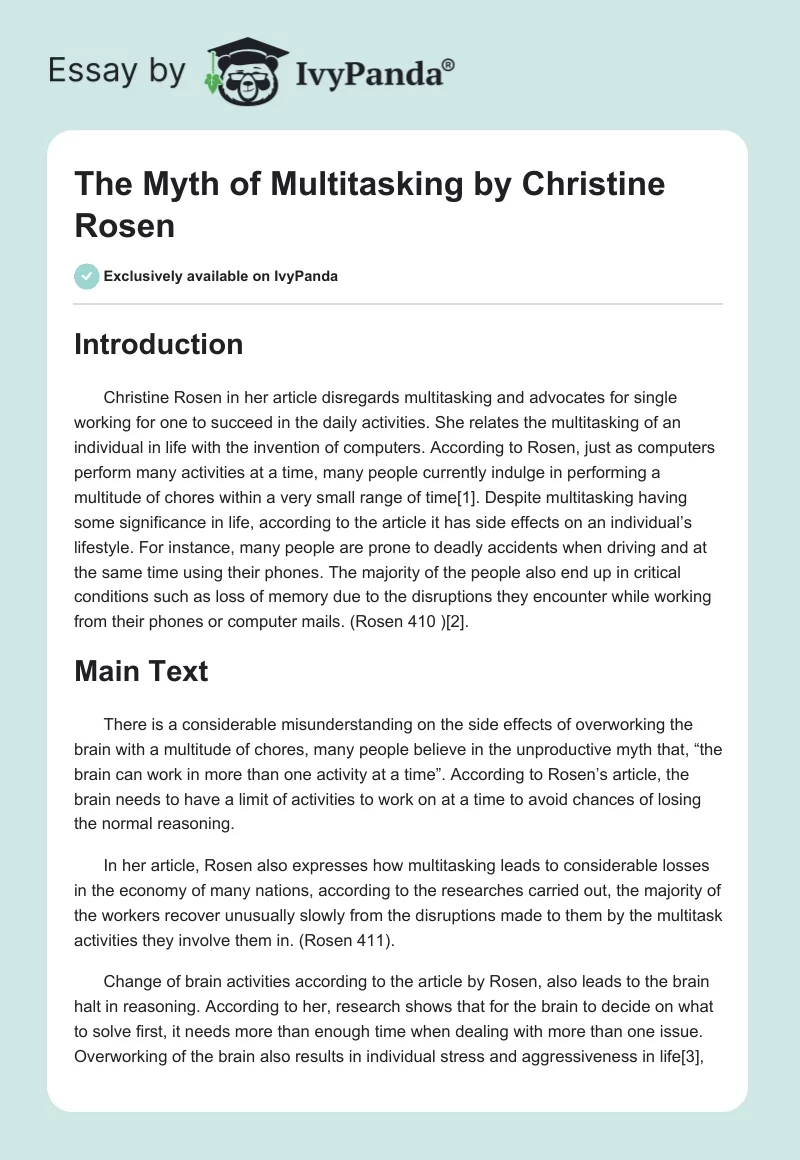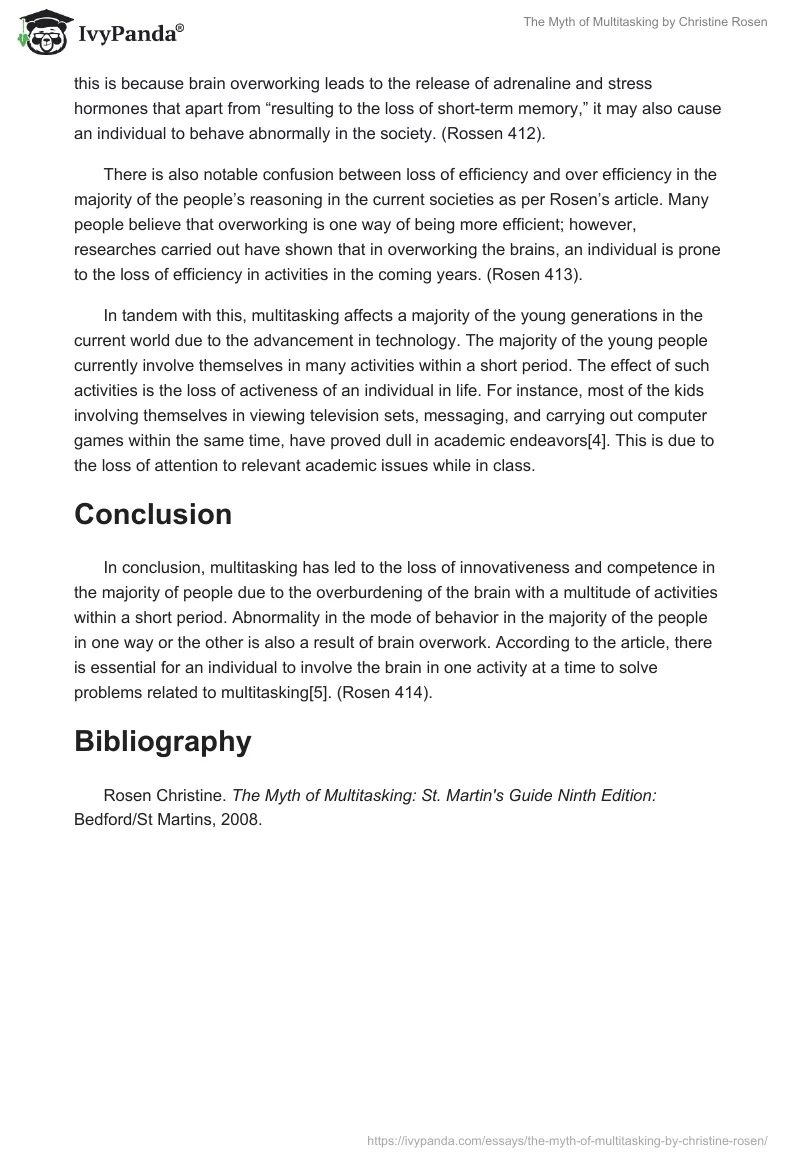Introduction
Christine Rosen in her article disregards multitasking and advocates for single working for one to succeed in the daily activities. She relates the multitasking of an individual in life with the invention of computers. According to Rosen, just as computers perform many activities at a time, many people currently indulge in performing a multitude of chores within a very small range of time. Despite multitasking having some significance in life, according to the article it has side effects on an individual’s lifestyle. For instance, many people are prone to deadly accidents when driving and at the same time using their phones. The majority of the people also end up in critical conditions such as loss of memory due to the disruptions they encounter while working from their phones or computer mails. (Rosen 410 ).
Main Text
There is a considerable misunderstanding on the side effects of overworking the brain with a multitude of chores, many people believe in the unproductive myth that, “the brain can work in more than one activity at a time”. According to Rosen’s article, the brain needs to have a limit of activities to work on at a time to avoid chances of losing the normal reasoning.
In her article, Rosen also expresses how multitasking leads to considerable losses in the economy of many nations, according to the researches carried out, the majority of the workers recover unusually slowly from the disruptions made to them by the multitask activities they involve them in. (Rosen 411).
Change of brain activities according to the article by Rosen, also leads to the brain halt in reasoning. According to her, research shows that for the brain to decide on what to solve first, it needs more than enough time when dealing with more than one issue. Overworking of the brain also results in individual stress and aggressiveness in life, this is because brain overworking leads to the release of adrenaline and stress hormones that apart from “resulting to the loss of short-term memory,” it may also cause an individual to behave abnormally in the society. (Rossen 412).
There is also notable confusion between loss of efficiency and over efficiency in the majority of the people’s reasoning in the current societies as per Rosen’s article. Many people believe that overworking is one way of being more efficient; however, researches carried out have shown that in overworking the brains, an individual is prone to the loss of efficiency in activities in the coming years. (Rosen 413).
In tandem with this, multitasking affects a majority of the young generations in the current world due to the advancement in technology. The majority of the young people currently involve themselves in many activities within a short period. The effect of such activities is the loss of activeness of an individual in life. For instance, most of the kids involving themselves in viewing television sets, messaging, and carrying out computer games within the same time, have proved dull in academic endeavors. This is due to the loss of attention to relevant academic issues while in class.
Conclusion
In conclusion, multitasking has led to the loss of innovativeness and competence in the majority of people due to the overburdening of the brain with a multitude of activities within a short period. Abnormality in the mode of behavior in the majority of the people in one way or the other is also a result of brain overwork. According to the article, there is essential for an individual to involve the brain in one activity at a time to solve problems related to multitasking. (Rosen 414).
Bibliography
Rosen Christine. The Myth of Multitasking: St. Martin’s Guide Ninth Edition: Bedford/St Martins, 2008.


